Reef manta rays forage on tidally driven, high density patches in Hanifaru Bay, Maldives
August 2021
Asia O. Armstrong, Guy M.W. Stevens, Kathy A. Townsend, Annie Murray, Michael B. Bennett, Amelia J. Armstrong, Julian Uribe-Palomino, Phil Hosegood, Christine L. Dudgeon & Anthony J. Richardson
Keywords: Foraging Ecology • Foraging Threshold • Megafauna • Zooplanktivore • Mobulid ray • Undinula • ZooScan
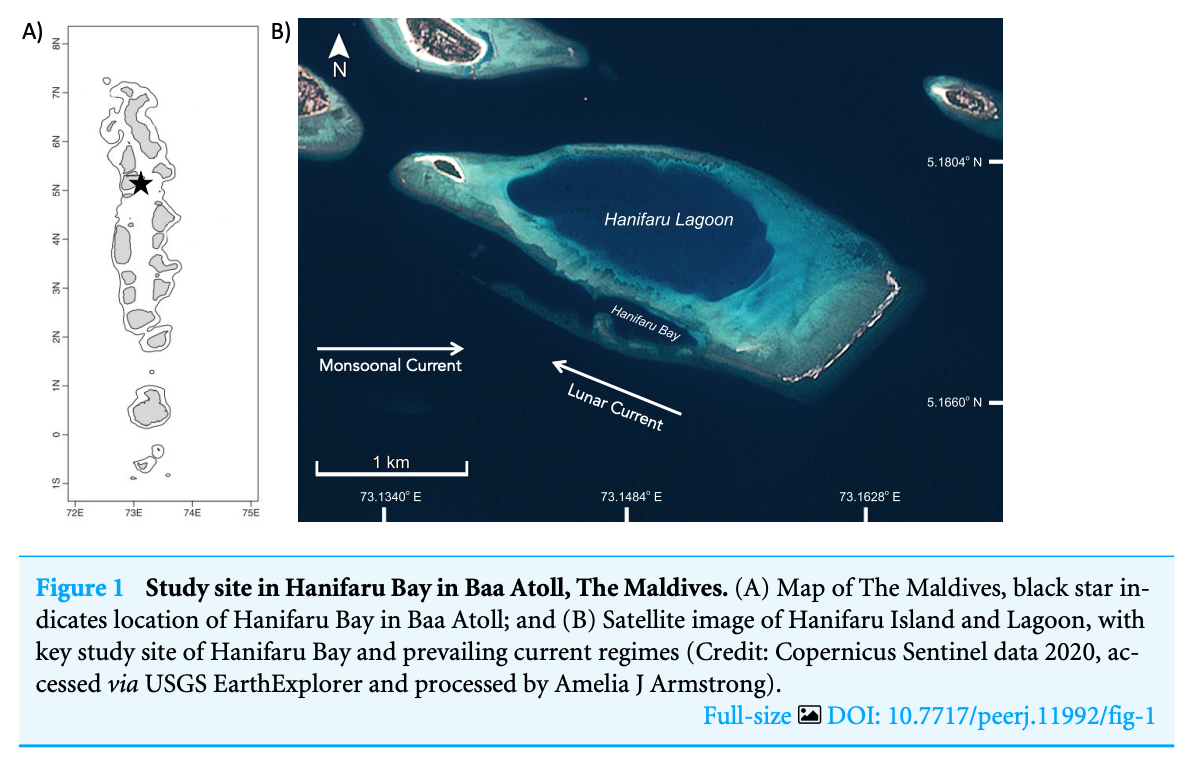

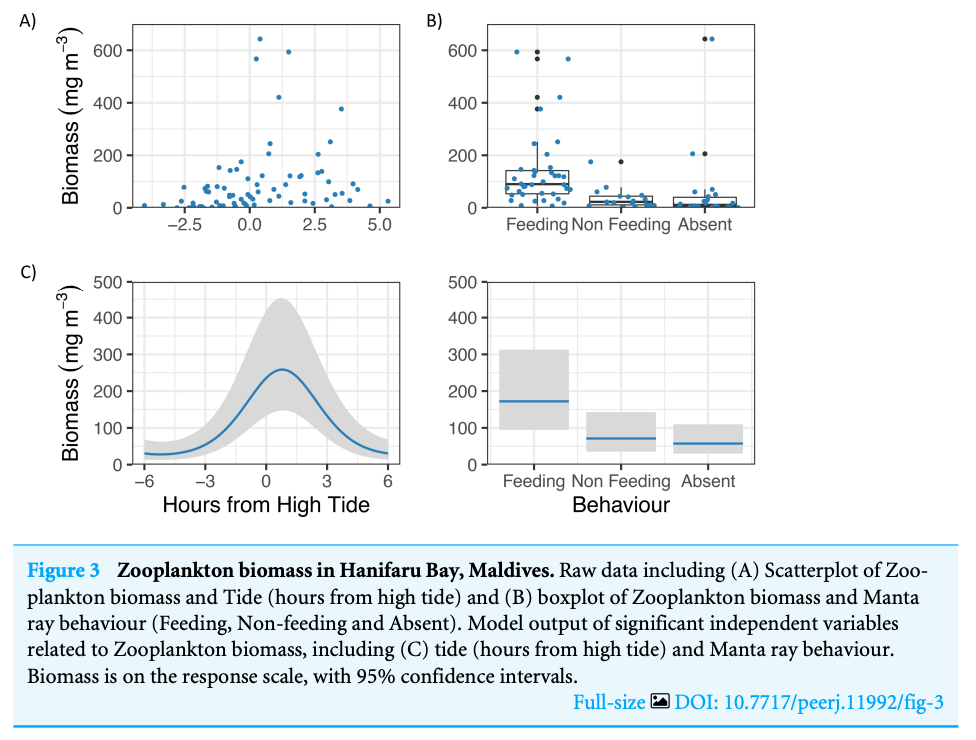
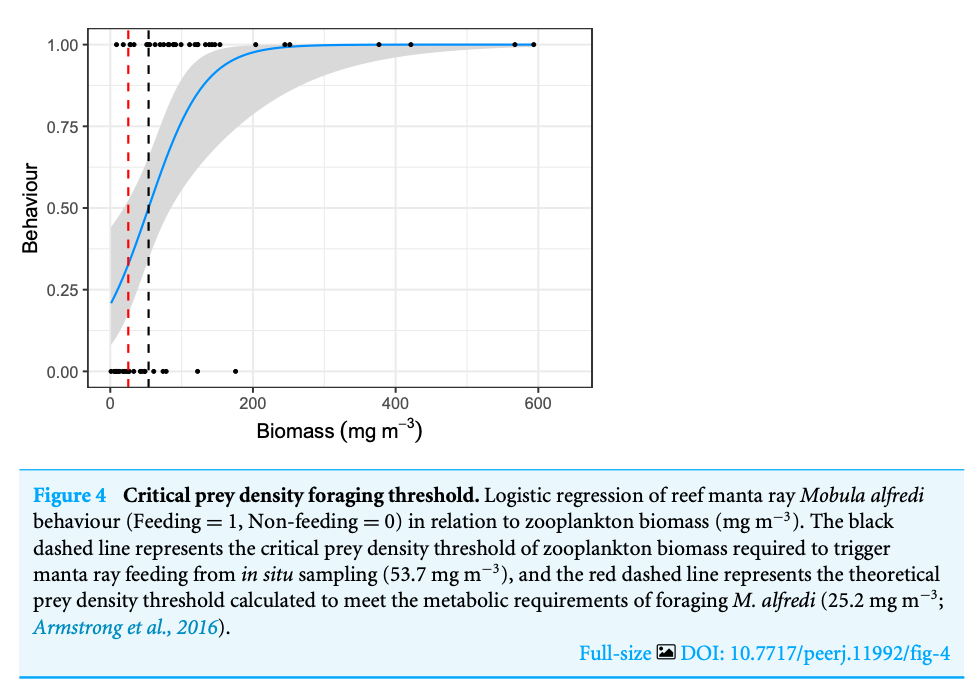
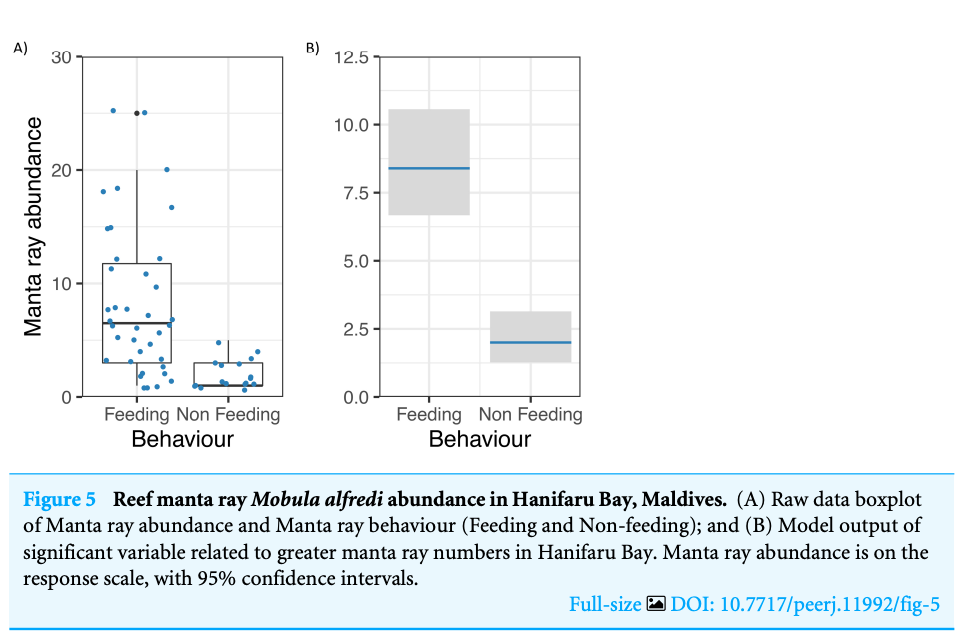
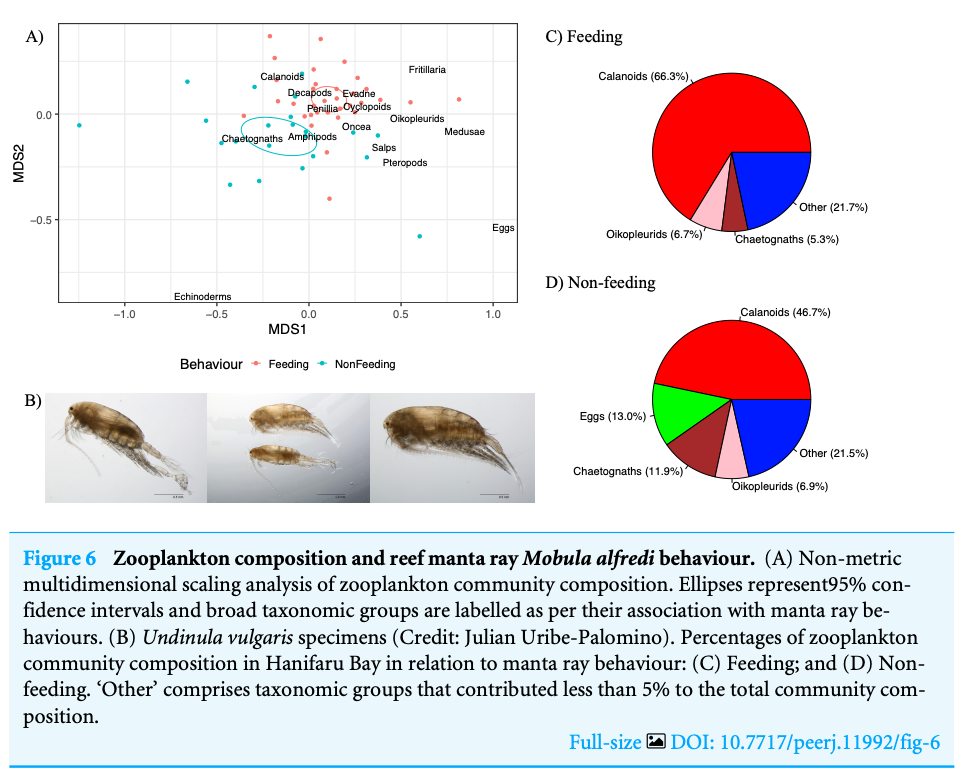
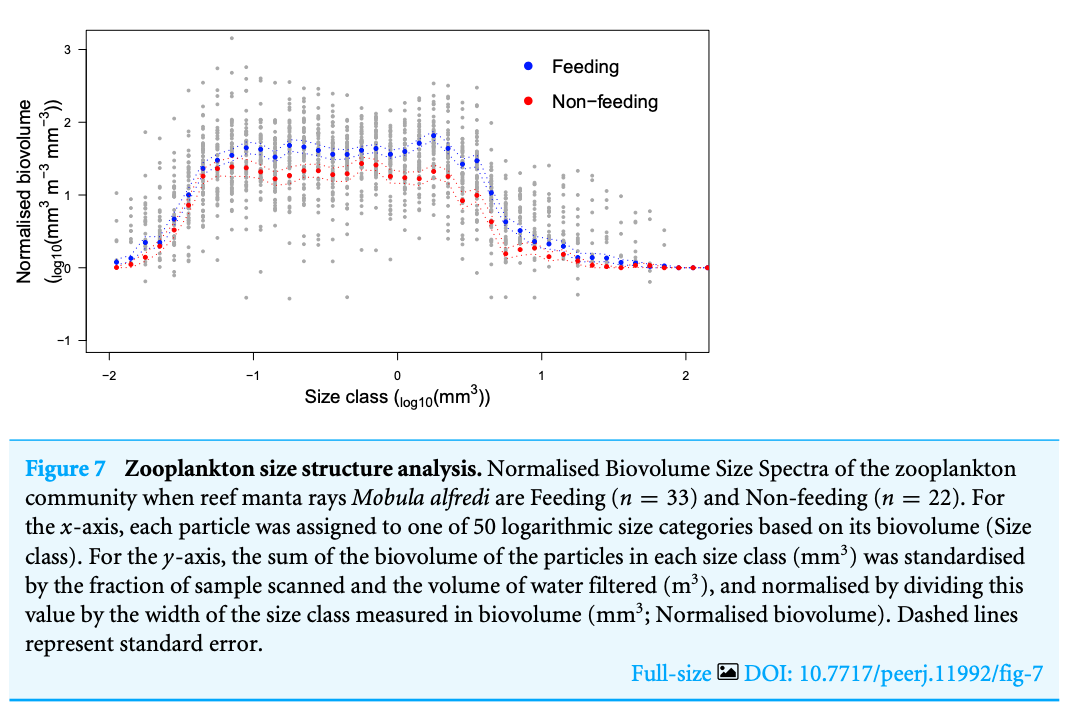
Summary: This study investigates the feeding environment of reef manta rays in Hanifaru Bay, Maldives. The researchers sampled zooplankton and recorded manta ray activity and behaviour, alongside environmental variables. The study found that manta ray feeding events were significantly related to high zooplankton biomass, and they switched from non-feeding to feeding behaviour at a prey density threshold of 53.7 mg dry mass m−3. The community composition of zooplankton was different when manta rays were feeding, and the dominant zooplankton species recorded was Undinula vulgaris. The study provides information on the conditions that may result in large aggregations of manta rays and can inform the management of this economically important marine protected area.
Abstract
“Manta rays forage for zooplankton in tropical and subtropical marine environments, which are generally nutrient-poor. Feeding often occurs at predictable locations where these large, mobile cartilaginous fishes congregate to exploit ephemeral productivity hotspots. Investigating the zooplankton dynamics that lead to such feeding aggregations remains a key question for understanding their movement ecology. The aim of this study is to investigate the feeding environment at the largest known aggregation for reef manta rays Mobula alfredi in the world. We sampled zooplankton throughout the tidal cycle, and recorded M. alfredi activity and behaviour, alongside environmental variables at Hanifaru Bay, Maldives. We constructed generalised linear models to investigate possible relationships between zooplankton dynamics, environmental parameters, and how they influenced M. alfredi abundance, behaviour, and foraging strategies. Zooplankton biomass changed rapidly throughout the tidal cycle, and M. alfredi feeding events were significantly related to high zooplankton biomass. Mobula alfredi switched from non-feeding to feeding behaviour at a prey density threshold of 53.7 mg dry mass m−3; more than double the calculated density estimates needed to theoretically meet their metabolic requirements. The highest numbers of M. alfredi observed in Hanifaru Bay corresponded to when they were engaged in feeding behaviour. The community composition of zooplankton was different when M. alfredi was feeding (dominated by copepods and crustaceans) compared to when present but not feeding (more gelatinous species present than in feeding samples). The dominant zooplankton species recorded was Undinula vulgaris. This is a large-bodied calanoid copepod species that blooms in oceanic waters, suggesting offshore influences at the site. Here, we have characterised aspects of the feeding environment for M. alfredi in Hanifaru Bay and identified some of the conditions that may result in large aggregations of this threatened planktivore, and this information can help inform management of this economically important marine protected area.”
Author Affiliations
School of Biomedical Sciences, The University of Queensland
The Manta Trust
School of Science, Technology, and Engineering, University of Sunshine Coast
Queensland Biosciences Precinct, CSIRO Oceans and Atmosphere
School of Biological and Marine Sciences, University of Plymouth
School of Mathematics and Physics, The University of Queensland
Funded by
Australian Research Council
University of Queensland Research Scholarships
Carl F. Bucherer
Save Our Seas Foundation
Four Seasons Resorts Maldives

